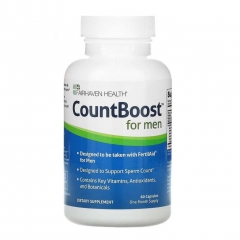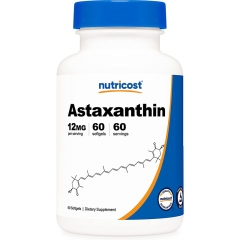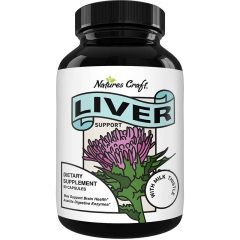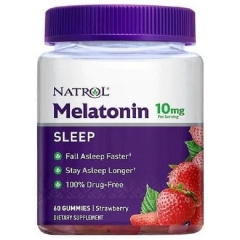-
 Thanh toán đa dạng, linh hoạtChuyển khoản ngân hàng, thanh toán tại nhà...
Thanh toán đa dạng, linh hoạtChuyển khoản ngân hàng, thanh toán tại nhà... -
 Miễn Phí vận chuyển 53 tỉnh thànhMiễn phí vận chuyển đối với đơn hàng trên 1 triệu
Miễn Phí vận chuyển 53 tỉnh thànhMiễn phí vận chuyển đối với đơn hàng trên 1 triệu -
 Yên Tâm mua sắmHoàn tiền trong vòng 7 ngày...
Yên Tâm mua sắmHoàn tiền trong vòng 7 ngày...
The Prostate Monologues: What Every Man Can Learn from My Humbling, Confusing, and Sometimes Comical Battle With Prostate Cancer
-

- Mã sản phẩm: 1609610555
- (29 nhận xét)

- Publisher:Rodale Books (August 20, 2013)
- Language:English
- Hardcover:240 pages
- ISBN-10:1609610555
- ISBN-13:978-1609610555
- Item Weight:1.06 pounds
- Dimensions:6.24 x 0.81 x 9.26 inches
- Best Sellers Rank:#1,255,445 in Books (See Top 100 in Books) #150 in Prostate Disease (Books) #169 in Prostate Health (Books) #677 in Breast Cancer (Books)
- Customer Reviews:4.6 out of 5 stars 29Reviews

Tính năng sản phẩm
• Used Book in Good ConditionMô tả sản phẩm
Product Description
Recently diagnosed with prostate cancer and approaching surgery, Jack McCallum wanted to tackle the confusion, misconceptions, and conflicting medical advice that so many men struggle with when thinking about the disease. So he got to work writing The Prostate Monologues.
Through the lens of his own experience, McCallum attacks the nitty-gritty questions about prostate cancer that men think about (but may be too bashful to ask their doctors) with honesty and humor. For example, "When is it safe to attempt intercourse, or at least, self-inflicted orgasm?" Or, if you have surgery, "What's it like the first time you shop for adult diapers?" With wry humor, McCallum decodes the sometimes-confusing jargon of medical professionals so that it is understandable and relatable to "regular" men.
Prostate cancer is the second most common cancer among men and the second most fatal. Worse than the obvious commonality and mortality of the disease, though, is the fact that prostate cancer can rob a man of his manhood. Accordingly, McCallum handles the subject not only with care and knowledge, but also with good cheer. Through the honest telling of his own story, and drawing on the latest research, McCallum shares insight into what's worked for him—and what's proven to work—in surviving cancer with your sense of humor intact.
Review
“I know from personal experience that deciding whether or not to intervene after a prostate cancer diagnosis can be agonizing. Fortunately, Jack McCallum has written an honest, even-handed book to help separate fact from myth. I wish it had been around two years ago.” —Phil Jackson, 13-time NBA champion and author of Eleven Rings: The Soul of Success
“Jack McCallum has skin in the game and has created a compelling narrative which is personal, humorous, practical and informative. The Prostate Monologues is the perfect book for men with prostate cancer as well as those who love them.” —Steven A. Kaplan, M.D., Chief, Institute for Bladder and Prostate Health, Weill Cornell Medical College
“It is time for men to be as open and informed about prostate cancer as women became about breast cancer. With humor, humanity, frank discussion, and good information, Jack McCallum helps men understand the disease and the decisions many of them will face.” —Jeff Jarvis, author of Public Parts and What Would Google Do? and a prostate patient
“Jack McCallum's book sheds much light on a subject that sometimes confounds even those of us in the prostate cancer field. The Prostate Monologues has the potential to help thousands of men trying to make a difficult decision. Please read it.” —Dr. David Lee, Chief of Urology, Penn-Presbyterian Medical Center
“Jack McCallum's book manages the impossible, sifting through mountains of data, conflicting ‘expert' opinion, the personal and the biomedical, all in an engaging manner that is just serious and funny enough to do the trick.” —Dr. Peter Bach, attending physician, Memorial Sloan-Kettering Cancer Center
“Writing a compelling and informative book on the subject without sounding clinical or distasteful can prove challenging even to a seasoned wrtier...McCallum does a great job of presenting each of these facets in ways that are both informative and candid. He takes the reader through his apprehensions and presents a clear picture of what it was like for him.” —Morning Call
“Irreverent, brave and unfailingly honest, this book follows one sportswriter's journey through prostate cancer diagnosis and treatment. No lectures, McCallum promises, and no regrets.” —Grand Forks Herald
“[McCallum] tackles the subject in great detail, brining his everyman attitude and a researcher's eye towards translating an oft-confusing and frightening topic for the general audience....For those interested in, or worried by, prostate cancer...it's an accessible starting point.” —Publisher's Weekly
About the Author
Jack McCallum is a veteran sportswriter and the author of the bestselling Dream Team (2012). Working with Sports Illustrated for over 30 years, he won the Curt Gowdy Award from the Naismith Memorial Basketball Hall of Fame in 2005, and before that he was awarded the National Women Sports Foundation Media Award. Today, McCallum teaches journalism at Muhlenberg College. He lives in Bethlehem, PA.
Excerpt. © Reprinted by permission. All rights reserved.
CHAPTER 1
... In which the author hears about an orgasm, lays out the prostate stats, witnesses a prostatectomy, and against all odds does not lose his lunch
THE CALL CAME IN AT ABOUT 10:00 P.M. It was Asha Jagtiani, a woman I had met only once, delivering the following information:
"Jack," she said, "Leonard wanted me to tell you that he just had an orgasm. He is very, very happy."
"That's fantastic," I said. "Tell me about it."
"We were fooling around," said Asha, "and it just happened. We didn't really expect much but then, all of a sudden, he said he orgasmed."
"It was dry, right?" I asked.
"Oh, yes," said Asha. "Nothing came out. But he said it felt just like an orgasm and we wanted you to know. This has made him feel even better about the operation, the fact that he can still have sexual relations."
"I understand completely," I said. "Tell Leonard congratulations."
I am not a close pal of Leonard Collier's, I am not a sex counselor, and I am not Dr. Phil. When I received this climactic news, I had never met Leonard Collier personally, though I had seen him knocked out cold and stripped down naked in a refrigerated operating room. Our connection is this: I had watched Leonard go through the same surgical procedure (robotic prostatectomy) performed by the same surgeon (David Lee, MD) at the same hospital (Penn Presbyterian Medical Center in Philadelphia) that I had gone through. Those who have endured prostatectomy surgery often compare notes.
This was a happy one.
THREE WEEKS BEFORE ASHA'S ORGASM NEWS, I am sitting in the office of said Dr. Lee, the chief of urology at Penn Presbyterian Medical Center, early on a Wednesday morning. In about an hour he will be sitting behind the console of a $1.9 million robotic device, a multitentacled thing that resembles a droid from Star Wars, directing its "fingers" as it cuts into the abdomen of Collier, a 64-year-old retired educator from West Chester, Pennsylvania.
But at this moment, Dr. Lee is thinking about golf.
"Putting," he says, "is much harder than what I'm about to do. Putting is mysterious."
Putting is mysterious, I agree. But so is surgery. And so is the concept of digging into someone's abdominal cavity and pulling out a gland through a small hole just above the navel--especially because it's done without the surgeon actually touching the man or even standing over him.
I'm a little nervous. I'm not a huge fan of blood and gore, my own or anyone else's. I never wanted to be a doctor, never even played doctor. The robotic prostatectomy procedure is available for viewing on the Penn Web site and, like everything else in the world, on YouTube, but I had chosen not to watch one before my own surgery. Still, research is research, so here I am, scrubbing up and trying to figure out how to carry notebook, pen, and tape recorder into an operating room without dropping them into Leonard Collier's abdominal cavity.
I should emphasize that Leonard, just now going blithely and utterly to sleep in the prep room, does not object to my being there; a week earlier he had given me permission to watch his innards being opened up. To the extent that one can be gung ho about surgery, that state of mind would describe Leonard, who, as an African American, is aware of the greater risk he faces of dying of prostate cancer. Nor would Leonard object to the pre- procedure, off-topic talk about golf: He had selected Dr. Lee not only because of the surgeon's experience (3,300 robotic prostatectomies), but also because Lee is a fellow golfing traveler.
It is difficult to get precise numbers, but Leonard Collier's prostate and mine were two of somewhere between 55,000 and 75,000 that were removed in 2012 across these United States. About 25 percent of men with cancerous prostates chose to intervene with various forms of radiation. A much smaller number chose to monitor their cancer without surgical or radiological intervention in what is known as "active surveillance." A 2010 article in the Journal of Clinical Oncology reported that 7 percent of the men in a particular study chose that route, so that would put the 2012 active-surveillance number at roughly between 3,850 and 5,250.
The reason that there is so much prostate cancer activity is that there is so much prostate cancer. The National Cancer Institute (NCI) predicted that about 241,740 new cases of prostate cancer would be diagnosed in 2012 (final numbers were not yet available at the time of this writing), making it the second most common cancer in men behind skin cancer. The NCI estimated that prostate cancer would kill 28,170 men in the same year, making it the second-leading cause of death in men behind lung cancer, which would likely kill 87,750 men (and 72,590 women). Overall, prostate cancer is responsible for 3 percent of all male deaths.
But parse those numbers carefully. First, don't conflate 28,170 with 241,740; most of the deaths are from cancers that were diagnosed much earlier than 2011. Prostate cancer is among the slowest growing of all cancers, with an estimated 80 percent of the cases nonaggressive and slow growing (meaning a nettlesome 20 percent--a not insignificant number--are aggressive).
Second, relatively few of the men diagnosed die of the disease. By comparison, the NCI estimated that in 2012 there would be 43,920 new cases of pancreatic cancer and 37,390 deaths. Not all of the newly diagnosed died within one year, but the best estimate from the American Cancer Society is that the five-year survival rate for pancreatic is only 4 percent. By contrast, the 15-year survival rate for prostate cancer is above 90 percent. Perhaps "I have prostate cancer" sometimes sounds so horrific because it's heard as "I have pancreatic cancer." Misidentification through alliteration.
Look at it this way: About 1 in 6 men will be diagnosed with prostate cancer at some time in his life, but only 1 in 36 will die of the disease. Of course, if your loved one is that "1," you don't think of it as an "only" number.
Prostate cancer is considered an old man's disease, and there is much truth to that. The probability of being diagnosed with prostate cancer is 1 in 8,499 for men younger than 40; 1 in 38 for men ages 40 through 59; 1 in 15 for men ages 60 through 69; and 1 in 8 for men ages 70 and older. About 70 percent of men who die from prostate cancer are older than 75.
But what does that mean exactly? A 75-year-old man was considered absolutely ancient by our forefathers. If you want to live to, say, 95--and at present I have no reason to think I don't--75 isn't all that old. According to the US Census Bureau, the average white male lives almost 8 years longer (75.9 years compared to 68) now than he did in 1970, and the average black male lives almost 11 years longer (70.9 years instead of 60).
None of those statistics recommend for or against treatment. They are merely more things to toss into the cluttered prostate cancer options bag.
As I wrote in the Prologue, prostate cancer has an increasingly high public profile. Lung cancer is far more deadly, but gets far less attention. "It's the blame thing," says Peter Bach, MD, a lung cancer specialist and attending physician at Memorial Sloan-Kettering Cancer Center in New York City. "Lung cancer affects people who are poor, first of all, because it lines up with smoking. And there aren't a lot of survivors. There are a lot of survivors of prostate cancer."
Actually, prostate cancer, according to some researchers, is much more closely linked with the environment and lifestyle than people think. Asian men hardly ever die of prostate cancer, for example, though they develop it in greater numbers when they emigrate to Western countries, possibly as a result of changes in diet and an uptick in stress.
Because a relatively small percentage of diagnosed men die of prostate cancer, there has long been a movement among those with low-risk cases not to treat it, and to instead adopt a "watch and wait" philosophy. In the February 2004 issue of The Lancet Oncology, a British medical journal, Chris Parker, MD, described prostate cancer as "the only human cancer that is curable but which commonly does not need to be cured." Much debate is taking place--and will be covered in this book--about what qualifies as "commonly."
The numbers are again hazy, but there will probably be more who choose not to get treated in 2013 than there were in 2012, and there likely will be more in 2014 than there were in 2013. If "active surveillance" can't be characterized as a full-scale march, it certainly seems to be a mobilization. And as the calendar carries me further away from February 20, 2012, the date of my robotic prostatectomy, I will continue to wonder if I should have joined that active-surveillance movement. I don't agonize about it, but I wonder.
I DON'T RECALL anything about my robotic procedure, of course, having drifted peacefully into anesthetic purgatory just as Dr. Lee and I were talking about getting together to play golf. I awakened a few hours later, having lost from my body weight 39 grams--about 1.4 ounces--the weight of my average-sized cancerous prostate.
So I am going to witness Leonard's surgery to see what was done to me.
Kelly Monahan, Dr. Lee's PA (physician assistant), escorts me into Operating Room 9, which is much larger than a meat locker though not a helluva lot warmer. Dead-to-the-world Leonard Collier is lying spread-eagle on a small table and three nurses and a resident are prepping him for surgery, lining the table with protective gauze, checking instrument calibrations, peppering the cool, sterile air with medical gobbledygook.
This is the moment--before surgery--that sticks with me most viscerally. Leonard Collier looks so . . . so . . . vulnerable, all the more so when the Torquemadian leg spreader is activated. I can't help imagining what I looked like in a room that cold (let us never forget the Seinfeld episode about shrinkage), and in a position that revealing.
"When I was in here, I was all covered up, right?" I ask Kelly.
"Oh, absolutely," she says with a smile. "We didn't see a thing."
Dr. Lee enters the room almost unobtrusively. He is a powerful man around Penn Presbyterian, a rainmaker who performs more than 400 robotic prostatectomies per year, but there is about him none of the stereotypical surgeon's swagger. He is The Man without acting like The Man.
"Can we pause for a timeout?" Dr. Lee says. Everyone gets silent.
"This is Leonard Collier," pronounces Dr. Lee. "He is here for a robot- assisted laparoscopic prostatectomy." (That is the professional nomenclature for the robotic procedure, which goes by "RALP" in the medical journals.)
Other voices chime in with particulars: Date of birth. Allergies. The readiness of the instruments.
"It is 8:27 a.m.," says Dr. Lee. And it's time to begin the anatomical dig toward Leonard Collier's prostate.
The robot is wheeled into place at the feet of the patient. The staff has named it Big Sexy for no apparent reason. They talk affectionately of the robot, almost like it's a human being. Then again, it is doing a lot of the work.
Sterile wrap remains around all of Big Sexy except for its six protruding arms. I have relative freedom to roam around the operating room, but have been cautioned to stay away from both the robot ("Don't even let your hair touch it," Dr. Lee admonishes me) and the instruments ("Jack, you get close to my instruments," says nurse Felicia Wrice in a faux menacing tone, "I'm going to put you to work").
Before Dr. Lee begins the robotic procedure, Leonard's abdomen is basically turned into a pincushion by Kelly and Shailen Sehgal, MD, a resident. They make six small incisions for four robot ports and two laparoscopic instrument ports that will be handled by Kelly. Leonard's abdominal wall must be lifted to allow the insertion of a Veress needle, through which carbon dioxide is pumped into the abdominal cavity, "blowing it up like a balloon," as Dr. Lee describes it, to make more room to operate within.
I ask if this would be harder to do on a younger man with a muscular stomach.
"Absolutely," says Kelly, probably fighting off the temptation to add: "Though it was pretty easy when we did yours."
Kelly and Dr. Sehgal are on either side of Leonard, but when Dr. Lee sits down at the console he is a good seven feet away from the patient. He peers at his screen and begins to work the robot hands. He is seeing a picture of Leonard's abdomen that is magnified 10 times. One of the advantages of robotic surgery is that the surgeon's "physiological tremor" is not a factor in the patient outcome.
The robot's console is equipped with video simulation, but Dr. Lee doesn't find it all that helpful. "Airplane simulators are amazingly close to reality, but it is hard to replicate the body of a living organism," says Dr. Lee. "You need to see blood and tissue deformation." Dr. Lee learned his robotic technique primarily by operating on pigs.
The surgeon eats, plays golf, and stitches with his right hand, but writes and plays tennis with his left. "Being ambidextrous is very beneficial for a surgeon," he says.
As he moves his hands, his right foot also works two pedals. He looks like a cross between a kid playing a video game and an adult playing a church organ. The right pedal is in charge of power, the left is responsible for the motions of the robot. "I only have two hands and there are four robotic instruments," he says, "so I need the pedals."
I ask Dr. Lee, who is in his mid-40s, if he was good at video games. "I have to admit I was," he says. "It seemed to come to me easily. I was right there at the beginning with the Atari system. I remember Space Invaders. And all through medical school it was Tetris."
I am able to watch what Dr. Lee is doing at another console. The picture is 3-D and is so clear and clinical looking that it's not really gross. There is relatively little blood.
There is talk, not constant but steady. "A little more suction, please," Dr. Lee might say. Or "Great, Kelly," after she uses a clip to stanch blood flow. "When you've done as many cases as Dr. Lee and I have done," says Kelly, "there's not a lot of back and forth. Better for us, better for the patient. Less time in the OR, fewer complications."
- Mua astaxanthin uống có tốt không? Mua ở đâu? 29/10/2018
- Saffron (nhụy hoa nghệ tây) uống như thế nào cho hợp lý? 29/09/2018
- Saffron (nghệ tây) làm đẹp như thế nào? 28/09/2018
- Giải đáp những thắc mắc về viên uống sinh lý Fuji Sumo 14/09/2018
- Công dụng tuyệt vời từ tinh chất tỏi với sức khỏe 12/09/2018
- Mua collagen 82X chính hãng ở đâu? 26/07/2018
- NueGlow mua ở đâu giá chính hãng bao nhiêu? 04/07/2018
- Fucoidan Chính hãng Nhật Bản giá bao nhiêu? 18/05/2018
- Top 5 loại thuốc trị sẹo tốt nhất, hiệu quả với cả sẹo lâu năm 20/03/2018
- Footer chi tiết bài viết 09/03/2018
- Mã vạch không thể phân biệt hàng chính hãng hay hàng giả 10/05/2023
- Thuốc trắng da Ivory Caps chính hãng giá bao nhiêu? Mua ở đâu? 08/12/2022
- Nên thoa kem trắng da body vào lúc nào để đạt hiệu quả cao? 07/12/2022
- Tiêm trắng da toàn thân giá bao nhiêu? Có an toàn không? 06/12/2022
- Top 3 kem dưỡng trắng da được ưa chuộng nhất hiện nay 05/12/2022
- Uống vitamin C có trắng da không? Nên uống như thế nào? 03/12/2022
- [email protected]
- Hotline: 0909977247
- Hotline: 0908897041
- 8h - 17h Từ Thứ 2 - Thứ 7
Đăng ký nhận thông tin qua email để nhận được hàng triệu ưu đãi từ Muathuoctot.com
Tạp chí sức khỏe làm đẹp, Kem chống nắng nào tốt nhất hiện nay Thuoc giam can an toan hiện nay, thuoc collagen, thuoc Dong trung ha thao , thuoc giam can LIC, thuoc shark cartilage thuoc collagen youtheory dau ca omega 3 tot nhat, dong trung ha thao aloha cua my, kem tri seo hieu qua, C ollagen shiseido enriched, và collagen shiseido dạng viên , Collagen de happy ngăn chặn quá trình lão hóa, mua hang tren thuoc virility pills vp-rx tri roi loan cuong duong, vitamin e 400, dieu tri bang thuoc fucoidan, kem chống nhăn vùng mắt, dịch vụ giao hang nhanh nội thành, crest 3d white, fine pure collagen, nên mua collagen shiseido ở đâu, làm sáng mắt, dịch vụ cho thue kho lẻ tại tphcm, thực phẩm tăng cường sinh lý nam, thuoc prenatal bổ sung dinh dưỡng, kem đánh răng crest 3d white, hỗ trợ điều trị tim mạch, thuốc trắng da hiệu quả giúp phục hồi da. thuốc mọc tóc biotin























 KHUYẾN MÃI LỚN
KHUYẾN MÃI LỚN Hỗ Trợ Xương Khớp
Hỗ Trợ Xương Khớp Bổ Não & Tăng cường Trí Nhớ
Bổ Não & Tăng cường Trí Nhớ Bổ Sung Collagen & Làm Đẹp
Bổ Sung Collagen & Làm Đẹp Bổ Thận, Mát Gan & Giải Độc
Bổ Thận, Mát Gan & Giải Độc Chăm Sóc Sức khỏe Nam Giới
Chăm Sóc Sức khỏe Nam Giới Chăm Sóc Sức khỏe Nữ Giới
Chăm Sóc Sức khỏe Nữ Giới Chăm sóc Sức khỏe Trẻ Em
Chăm sóc Sức khỏe Trẻ Em Thực Phẩm Giảm Cân, Ăn Kiêng
Thực Phẩm Giảm Cân, Ăn Kiêng Bổ Sung Vitamin & Khoáng Chất
Bổ Sung Vitamin & Khoáng Chất Bổ Tim Mạch, Huyết Áp & Mỡ Máu
Bổ Tim Mạch, Huyết Áp & Mỡ Máu Bổ Mắt & Tăng cường Thị lực
Bổ Mắt & Tăng cường Thị lực Điều Trị Tai Mũi Họng
Điều Trị Tai Mũi Họng Sức Khỏe Hệ Tiêu hóa
Sức Khỏe Hệ Tiêu hóa Chăm Sóc Răng Miệng
Chăm Sóc Răng Miệng Chống Oxy Hóa & Tảo Biển.
Chống Oxy Hóa & Tảo Biển.